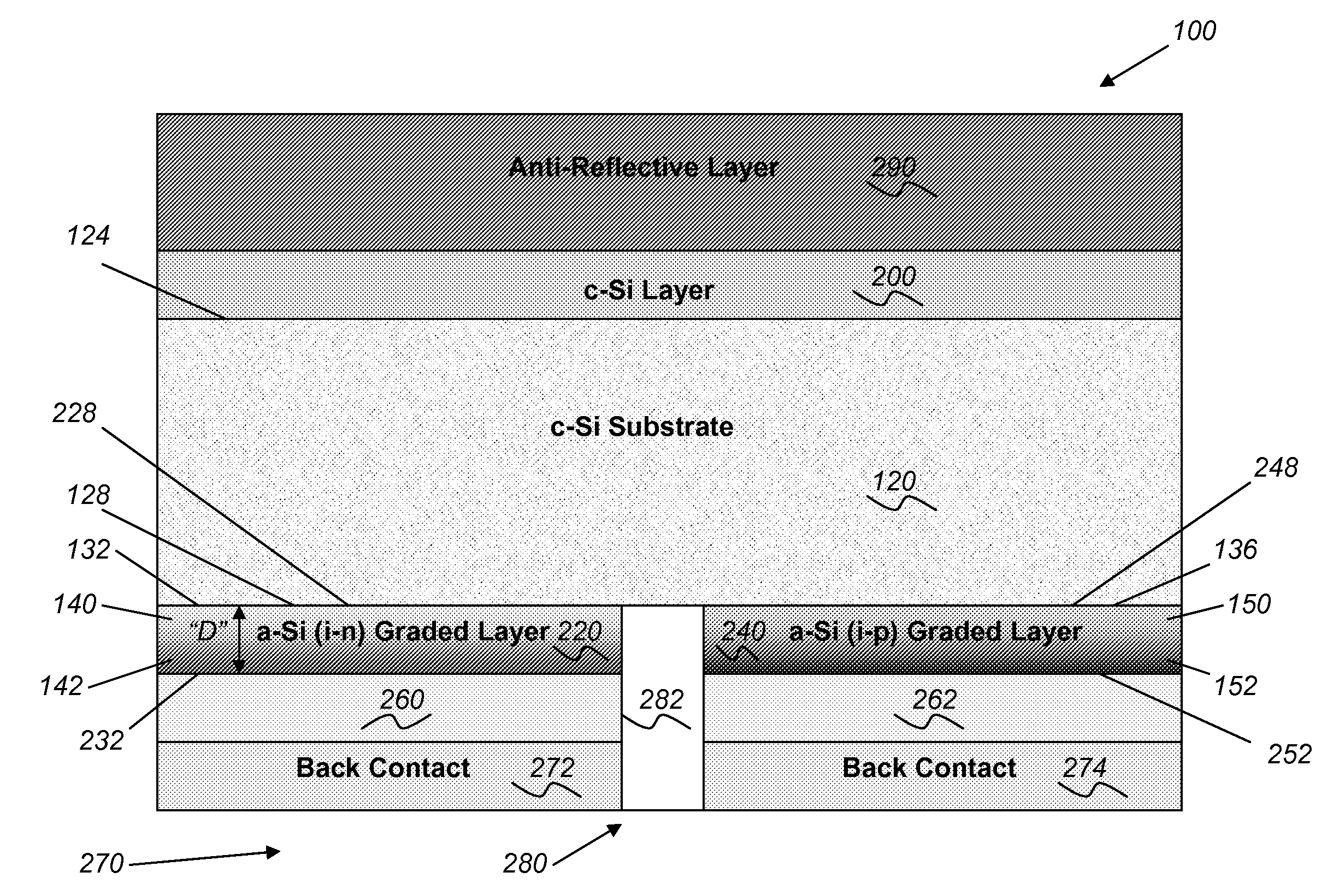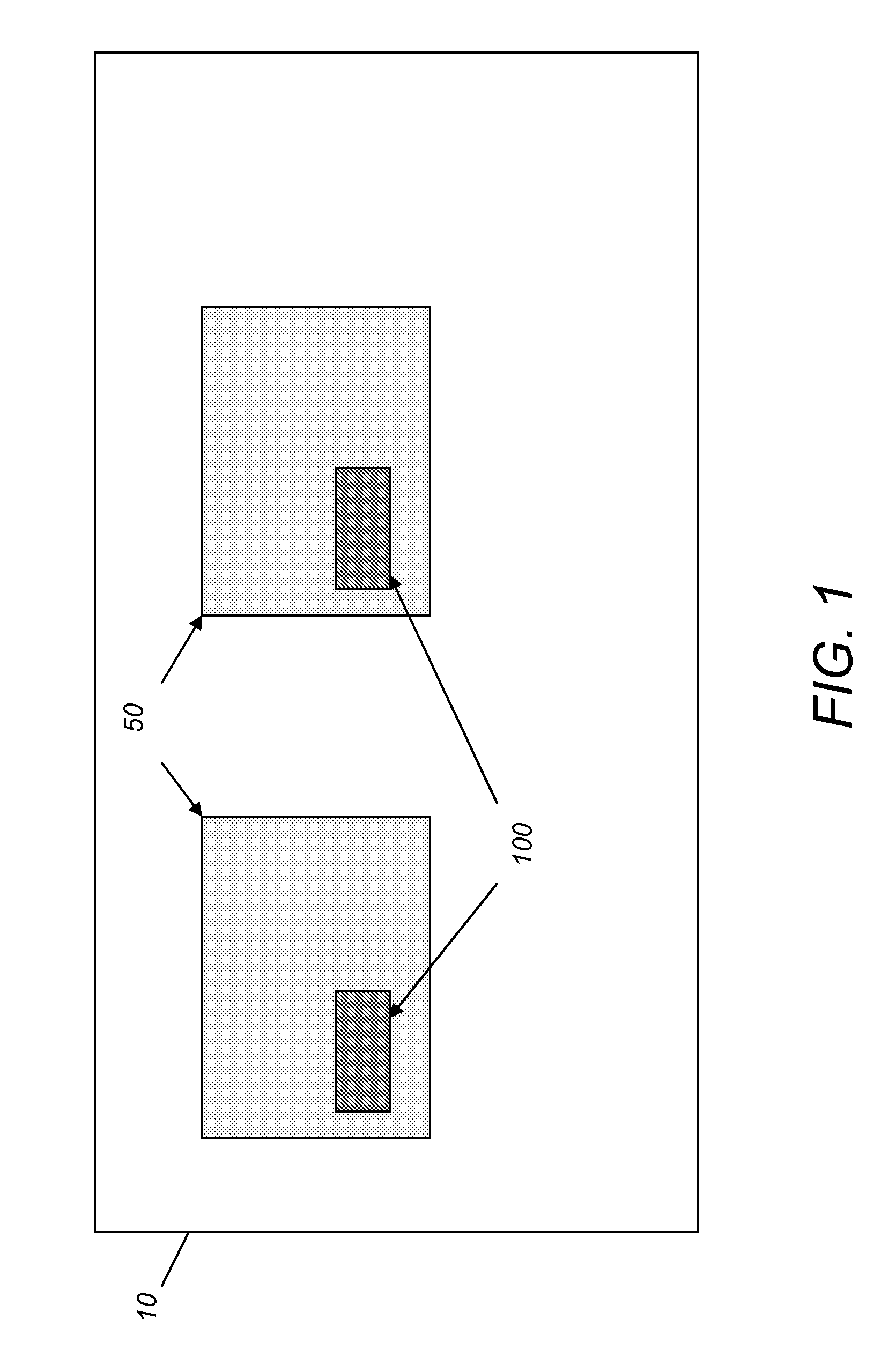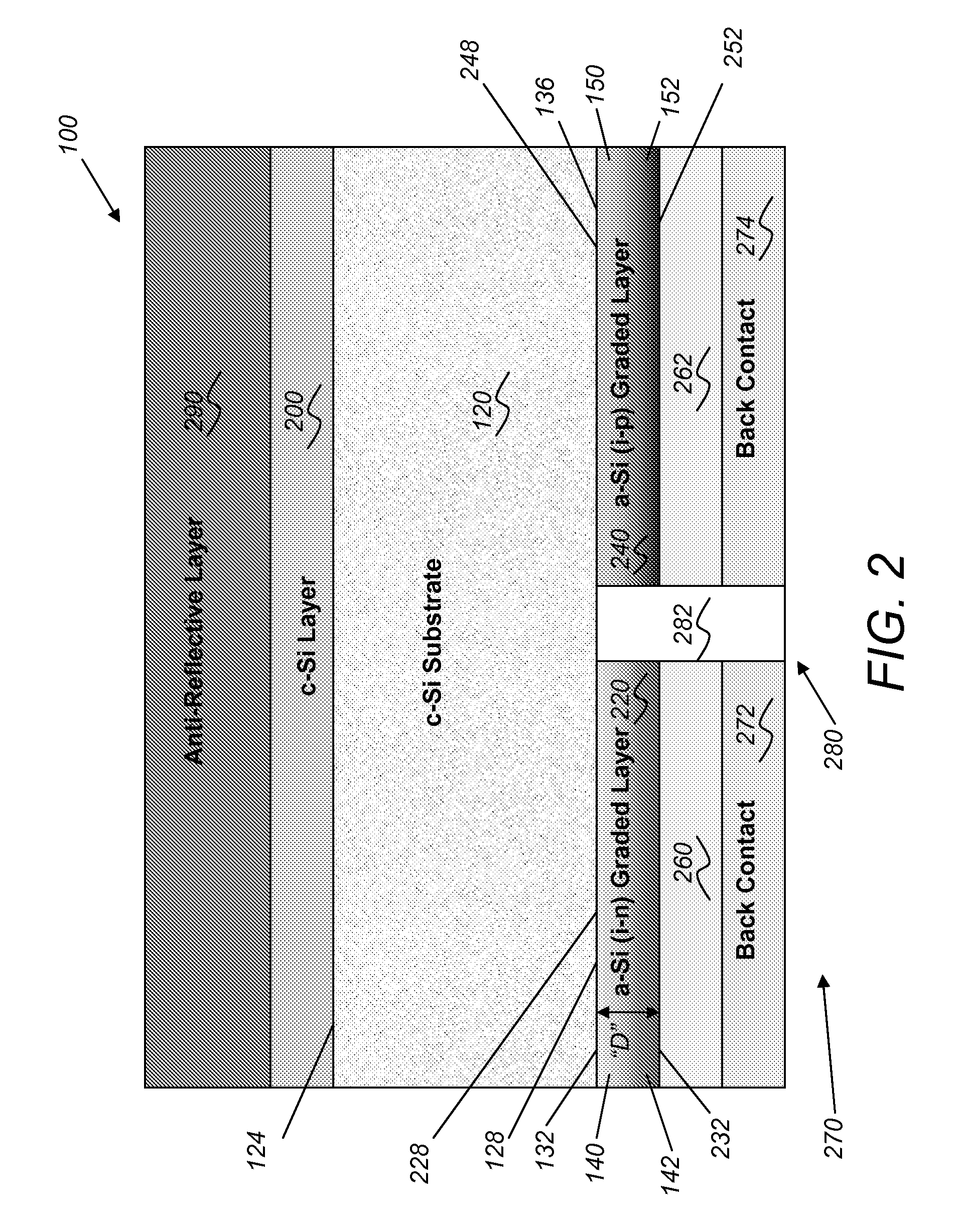Method And Apparatus For A Semiconductor Structure
a semiconductor structure and method technology, applied in the field of one or more solar modules, can solve the problems of reducing the efficiency of solar cells, so as to reduce waste of light adsorption, and reduce the negative effect of surface defects
- Summary
- Abstract
- Description
- Claims
- Application Information
AI Technical Summary
Benefits of technology
Problems solved by technology
Method used
Image
Examples
Embodiment Construction
[0045]As depicted in FIG. 1, one exemplary embodiment of a solar module 10 can include a plurality of solar cell devices 50. Particularly, each solar cell device 50 may further include at least one or more semiconductor structures 100.
[0046]As depicted in FIG. 2, an exemplary semiconductor structure 100 can include a substrate 120, a first semiconductor layer 200, a second semiconductor layer 220, a third semiconductor layer 240, a first electrode layer 260, a second electrode layer 262, at least one electrical contact 270, and a transparent or anti-reflective layer 290. Generally, the substrate 120 can include a front surface 124 and a back surface 128. The substrate 120 usually has a thickness of about 50 microns-about 600 microns. The substrate 120 can be a crystalline silicon, such as a multi-crystalline, including one or more dopants, such as a p-type or an n-type, or a mono-crystalline silicon. Desirably, the substrate 120 is an n-type-mono-crystalline silicon. A multi-crystal...
PUM
 Login to View More
Login to View More Abstract
Description
Claims
Application Information
 Login to View More
Login to View More - R&D
- Intellectual Property
- Life Sciences
- Materials
- Tech Scout
- Unparalleled Data Quality
- Higher Quality Content
- 60% Fewer Hallucinations
Browse by: Latest US Patents, China's latest patents, Technical Efficacy Thesaurus, Application Domain, Technology Topic, Popular Technical Reports.
© 2025 PatSnap. All rights reserved.Legal|Privacy policy|Modern Slavery Act Transparency Statement|Sitemap|About US| Contact US: help@patsnap.com



